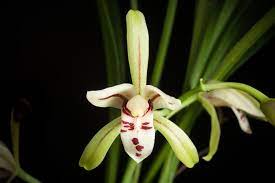CYMBIDIUM LANCIFOLIUM
Why in News:
Recently, an extremely rare and terrestrial orchid species Cymbidium lancifolium was discovered in the Chopta valley of the Western Himalayan region of Uttarakhand.
Important Points:
This is one of the beautiful species of Cymbidium, also known as Lance leafed Cymbidium.
Cymbidium orchids are one of the most popular orchid species cultivated on a large scale worldwide.
Distribution: This species is found naturally in India in Himalayas, Assam, Sikkim, Nepal, Bhutan, China, Taiwan, Japan and many of the SE Asian countries
They grow at altitudes of 300 to 2300 M.
In a natural condition, they grow in broad leaf forests where the soil is rich in humus and also plenty of leaf litter.
The plant is generally grown in cool to intermediate temperature conditions but with bright light.
They are highly valued in horticulture and are commonly sold as cut flowers and potted plants on a commercial scale due to their long-lasting property, wide range of colours and elegant appearance, making them a favourite choice for both indoor and outdoor decoration.
The discovery of Cymbidium lancifolium in Chopta valley highlights the rich biodiversity of Uttarakhand and the importance of conservation efforts to protect these rare and beautiful species.
Cymbidium orchids are one of the most popular orchid species cultivated on a large scale worldwide.
They are highly valued in horticulture and are commonly sold as cut flowers and potted plants on a commercial scale due to their long-lasting property, wide range of colours and elegant appearance, making them a favourite choice for both indoor and outdoor decoration.
Cephalanthera erecta var. oblanceolata was recorded from the Mandal valley of Chamoli district in 2021. This was a new record for the flora of India, and the finding was published in 'Nelumbo'. Another rare carnivorous plant Utricularia furcellata from the western Himalayas was documented in 2022 and finding was published in the prestigious ‘Journal of Japanese Botany’.




.jpg)


.jpg)
.jpg)


.jpg)

